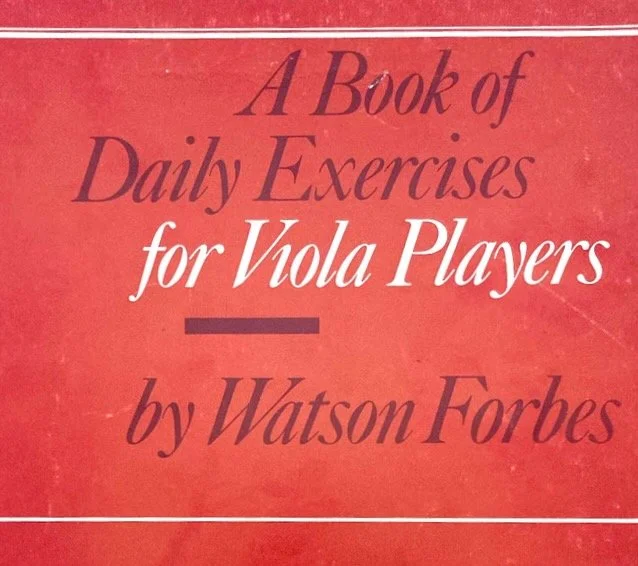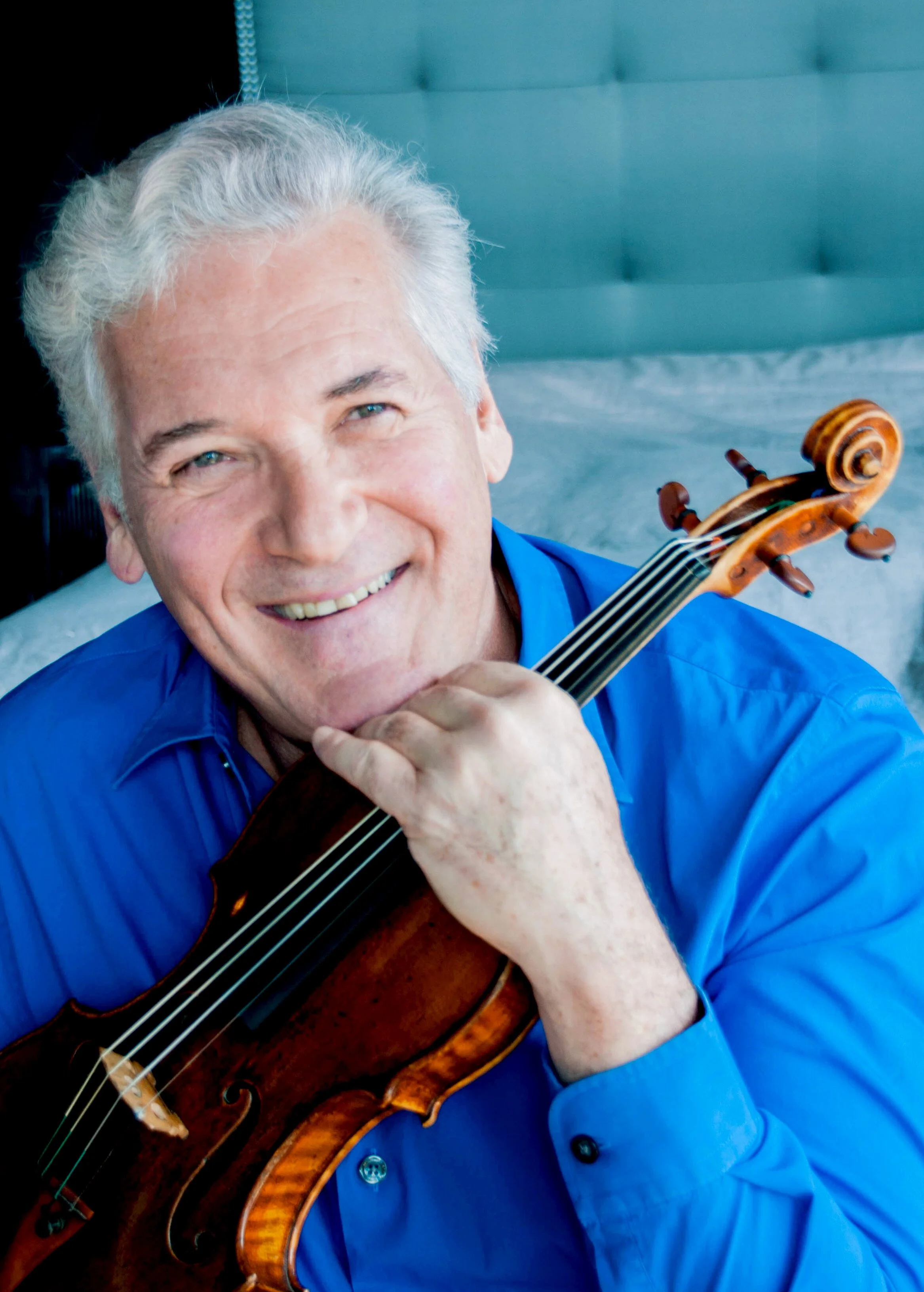Pattern Practice - Create Targeted Etudes with Intervallic Thinking
“Any other questions you have?”
It was the end of an illuminating lesson with Paul Coletti, former viola professor at the Colburn Conservatory. We’d spent part of the lesson deconstructing my left thumb (it needed a lot of work!), and the rest fleshing out musical details in the opening pages of the Bartok Viola Concerto to create a more musically exciting and convincing interpretation. I’d had the great fortune to observe Coletti teach — he had been on faculty at a summer festival hosted by SDSU — but this was my first time taking a lesson with him.
I had LOTS of questions, but I settled on pumping him for tips on this infamous passage from the Bartok:
The passage continues with similar figures for a few more lines, and it is AWKWARD! The left hand outlines four-note chords in a contorted position that seems built for a rubber hand. My standard problem-solving strategies had helped, but had little overall effect – it still sounded bad!
Coletti explained his approach to the passage, and it was ingenious: he advised me to transpose it down a fifth, then slowly work my way back up the fingerboard a half-step at a time. He called this general strategy Pattern Practice.
Down a fifth, the passage looks like this:
In 1st position it seems doable!
After a few repetitions in 1st position, he had me transpose it up by a half step, starting in 2nd position on F. Coletti instructed me to continue practicing in this manner, creeping up the fingerboard a half step at a time. Like a weightlifter working towards a 500lb deadlift, I would start with a light weight, then work my way fractionally over time up to my goal. But, when I reached the original note of B, Coletti advised that I shouldn’t stop, but instead KEEP GOING a few half steps higher. Going past the original notes made me feel bulletproof — if I could play it higher than necessary, playing it as written was easy!
By transposing the passage, I began to see it intervallically, unearthing its underlying pattern in the process. I could see the intervallic structure of the passage and understand how it was built, and as a result it felt less random. In short, this practice developed a greater sense of technical flexibility AND musical understanding that made a deep impression on me.
From that point forward I’ve relied on Pattern Practice as an important tool in my kit. It was on my mind recently as I worked on the Scherzo from Dohnanyi’s Serenade for String Trio, Op. 10. This movement has an impish and slightly devious character, both musically and technically! The last time I played it I struggled: the passagework seemed random, and my fingers tripped over the notes rather than dancing through them.
Here’s the opening:
Dohnanyi Scherzo Opening
Holy finger-twister, Batman! Just a few measures in and things are already convoluted! There are lots of accidentals and skips that make it hard to read, play and hear.
But what happens if I look at the first few bars of the opening intervallically? Is there an underlying pattern?
There is! The passage is simply a series of broken 4ths, descending a half step at a time, with a little cadence-y arrival at the end.
Versions of this passage bubble up throughout the movement, like this one a few lines later:
Starting at the 4th measure of this line, this variation of the motive has even clearer chromatic 4ths:
Descending chromatic 4ths are not something I have sitting in my back pocket! But with the knowledge of the structure of the passage, I could incorporate this unusual pattern into my own Pattern Practice. Nowadays I leave 15-20 minutes out of every hour I practice for Pattern Practice — I lump scales and arpeggios into this time, since they are simply patterns, albeit the ones we play most frequently.
Away from the music, and in my pattern laboratory (in my head I pronounce “laboratory” with a British accent - sounds more official), I can experiment with fingerings, play slowly and listen closely, play the 4ths as double stops etc. Essentially, I’m “playing” with the pattern, manipulating it in different ways until it’s familiar and easy. I do all this work from memory, away from the visually confusing notes.
My practice started like this:
I purposely start higher and go lower than what’s written in music, just as Paul Coletti had me play the passage from the Bartok both higher and lower than written. Since this pattern comes back numerous times in the Scherzo, but starts on different notes, practicing this way is high-yield.
Once the pattern was comfortably “in hand” and in my ear, I started practicing it in settings appropriate to the Scherzo, working on the same kinds of bowings and dynamics that show up in the movement:
In a few short steps, I’ve custom-built an etude for myself that targets problems in the music with a specificity that a normal scale or etude never could. This, for me, is the true value of Pattern Practice!
Pattern Practice in the Toolkit
Traditional diatonic scales are a fantastic tool for mastering challenging rhythm patterns or bowings, and etudes are a great way to work on specific techniques in a more musical setting. With imagination, both scales and etudes can be used in nearly infinite ways, to work on almost any musical technique. (Yampolski’s edition of the Kreutzers is a fantastic example of a creative use of etudes — sure, Kreutzer 9 could use some double stops).
But we know composers don’t limit themselves to the “pure” forms of scales and arpeggios in their music — that would be boring! Composers use all kinds of figures, but they are human, and humans like patterns! So the next time you have a tricky passage, get out your pattern detector and see if the underlying problem can be reduced to a series of intervals. Then see if you can turn that series into a “scale” and play around with it until it’s easy. Practicing your new “scale” with the bowings or rhythms in the passage is icing on the cake! Not only will you gain fluency with the passage, you might learn a bit more about how the music is constructed along the way!

















